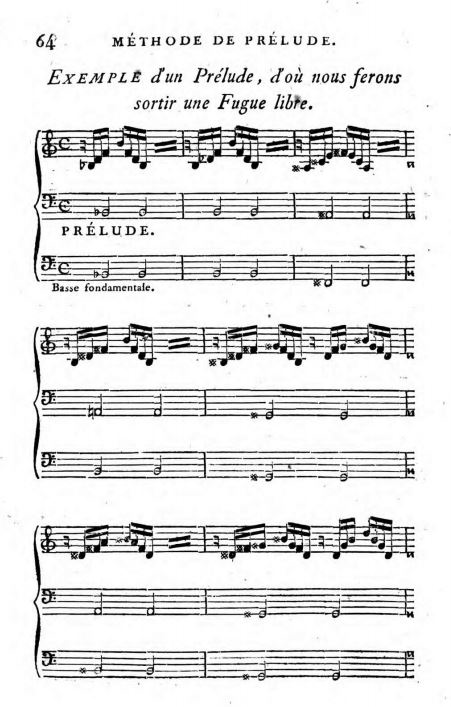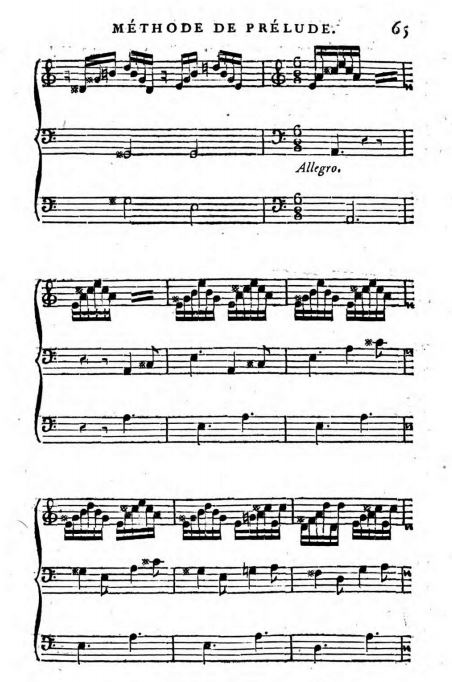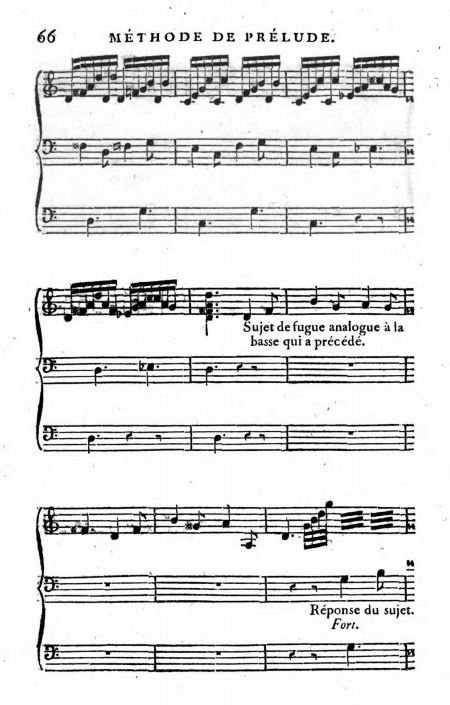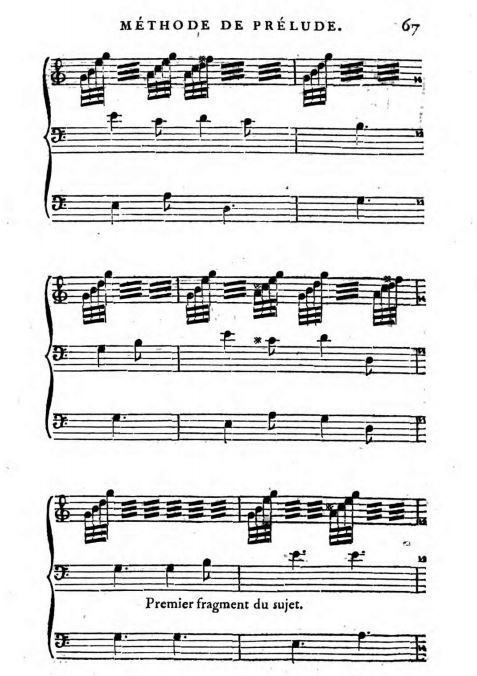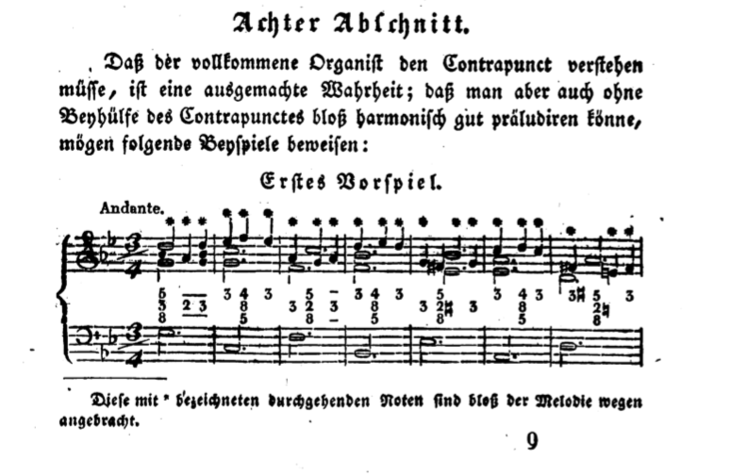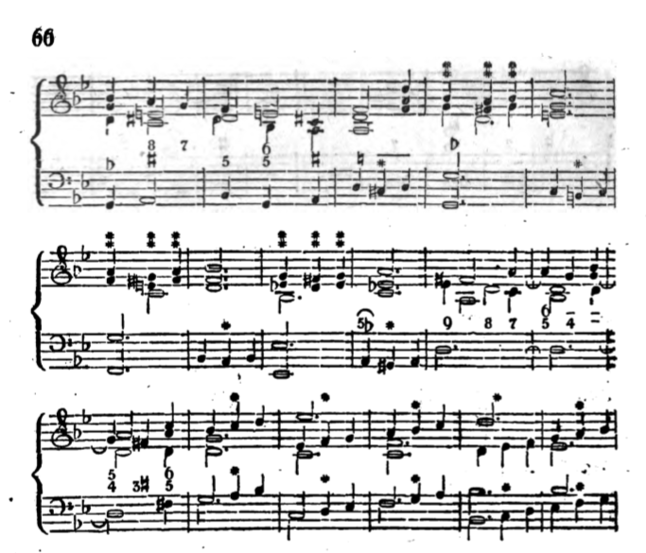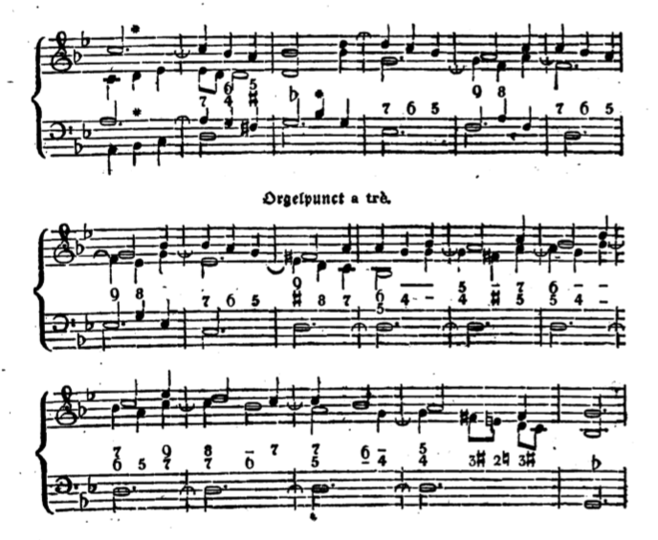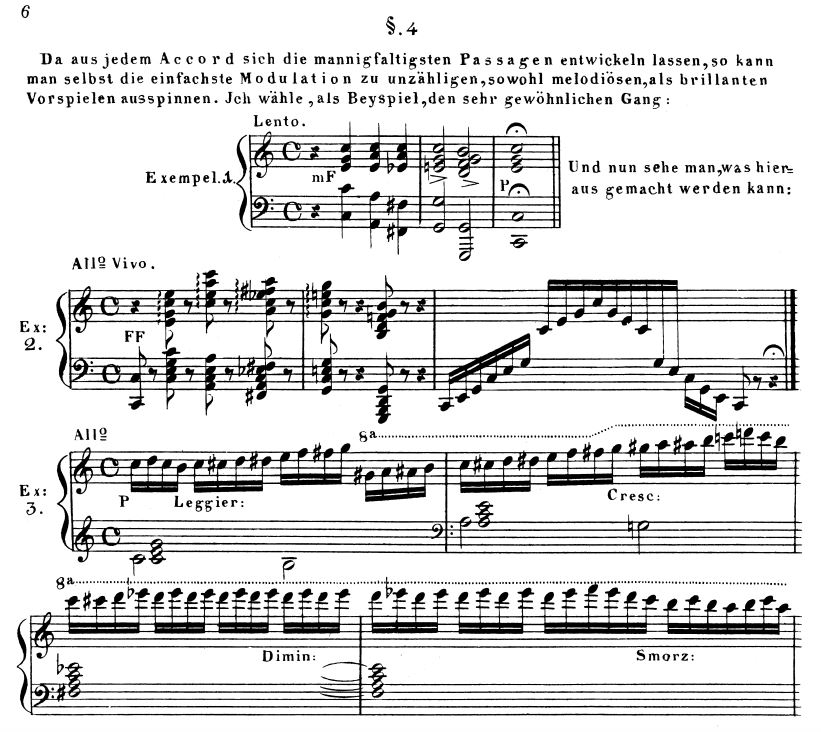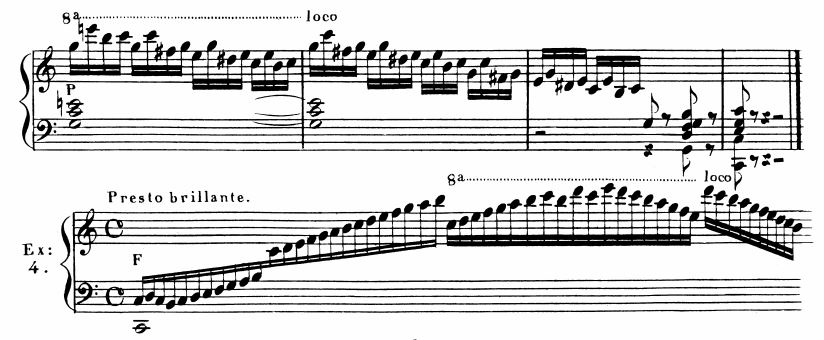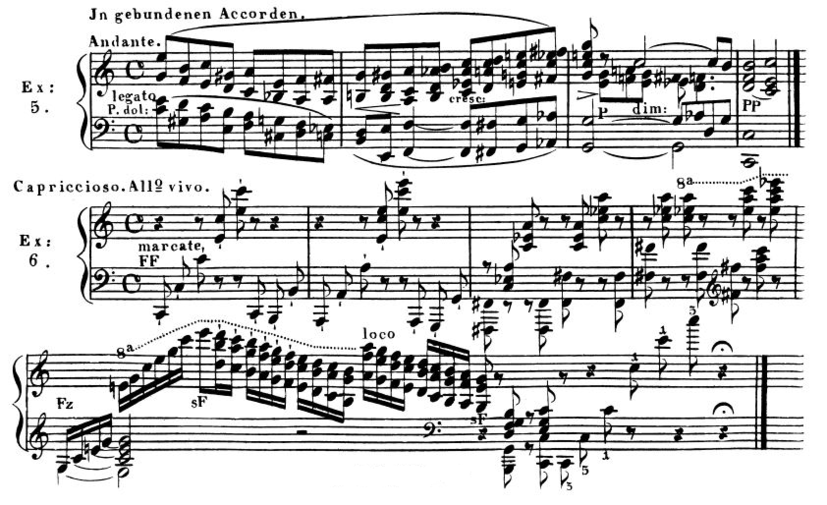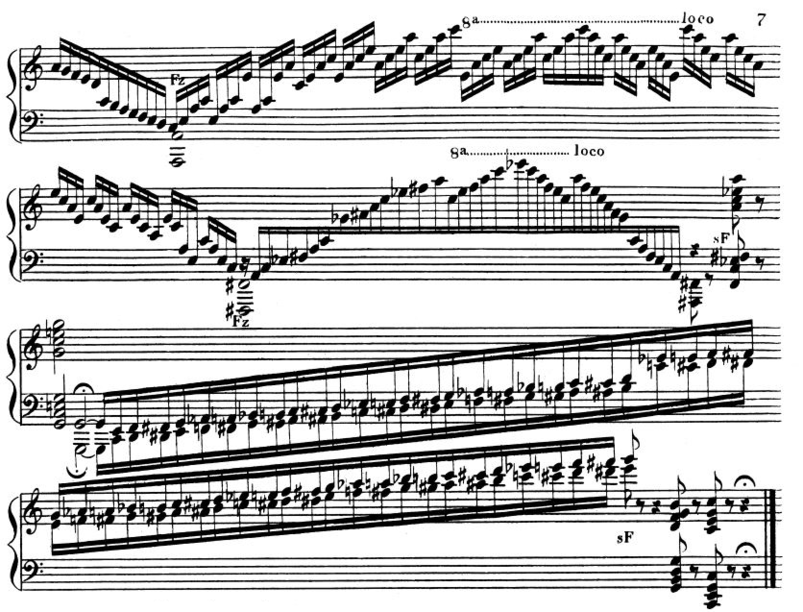This chapter presents a general overview of improvisation in the first half of the nineteenth century, first by tracing the Austro-Germanic tradition of performer-improviser-composers from Johann Sebastian Bach to Schumann, and then by explaining where improvisation was practiced (in the courts and homes of court musicians, in the church, in the salons of the aristocracy, in the newly emerging sphere of public concerts, and – not to be forgotten – at home alone) and how improvisation was taught. After a brief discussion of the history of improvisation as part of Western classical musical practice in Europe before the nineteenth century, certain examples of improvisational musical practice in all of the above-mentioned contexts will be presented, followed by a discussion of documents produced in order to teach musicians how to improvise and to whom they were intended to serve. To conclude the chapter, the decline of improvisation that took place around the middle of the nineteenth century will be addressed.
The Austro-Germanic tradition of performer-improviser-composers
In the Introduction I formulated the main research question guiding this project, which can be summarized as follows: How can one learn to improvise convincingly within the context of the nineteenth-century piano repertoire? An important justification for posing this question at all comes from the fact that improvisation was commonly practiced in the nineteenth century in Europe until around the middle of the century. In this chapter I will show that improvisation was an integral part of musical practice in the first half of the nineteenth century and that Schumann was no exception. The main reason for this chapter is to substantiate my plea for the need to revitalize and reintroduce improvisation to our twenty-first century performance practice, because this would not create an anomaly but in a sense would represent a simple continuation of a practice that has been very common in the music-making of previous centuries.
Improvisation permeated the classical musical tradition from its onset until around the middle of the nineteenth century when it gradually came to disappear, or at least as was seen from public view. Studies such as Hungarian musicologist Ernst Ferand's Die Improvisation in der Musik, published in 1938, have exposed how pervasively improvisation was practiced and how it crucially influenced the development of different musical styles over the course of the history of this particular musical tradition. Both vocal and instrumental music exhibited many degrees of improvisation, and these various practices influenced each other in many ways. The more florid vocal styles of liturgical music began to influence early instrumental music, and practitioners at the keyboard engaged heavily in improvisation in order to create moments of music-making that were given names that still resonate in our vocabulary today, such as fantasias and toccatas. Medieval and baroque virtuoso keyboardists listened to and learned from each other and developed a tradition that spanned generations and came to include Johann Sebastian Bach.1 His son Wilhelm Friedemann Bach remarks about his father that his organ compositions were "full of [...] expression of devotion, solemnity, and dignity, [...] but his unpremeditated organ-playing, in which nothing was lost in the process of writing down but everything came directly to life out of his imagination, is said to have been still more devout, solemn, dignified, and sublime" (quoted in Ferand 1961, 20). Bach's musical practice exemplifies the high Baroque tradition of keyboard improvisation, a tradition that remained more intact for a longer period of time at the organ than at other keyboard instruments (as will be discussed below), and as such Bach certainly did not witness the end of such a tradition.
The disappearance of improvisation coincided neither with the end of the Baroque period, nor with the many changes music and culture underwent at the beginning of the nineteenth century. Rather, it continued to be an important aspect of musical practice well into the Romantic period when much of today's standard repertoire had already been composed. In fact, improvisation not only continued to be practiced in the nineteenth century, but [...] it [also] embodied central aesthetic ideals of Romanticism. (Sancho-Velázquez 2001, 31)
In her dissertation “The Legacy of Genius: Improvisation, Romantic Imagination, and the Western Musical Canon,” Angeles Sancho-Velázquez disputes the widespread myth present in the literature that improvisation generally died out at the end of the Baroque era thanks to a full-fledged notational system present in the early Classical period that no longer includes figured-bass notation. The discussion of the Classical and Romantic eras here below will show that, indeed, improvisational practice was abundant and used in many ways during both these periods in music history; some examples should also show that the ever-presence of improvisation in musical practice actually played a crucial role in the composition of much of the repertoire that classically trained pianists commonly perform today.
In his book The Improvisation of Musical Dialogue, philosopher Bruce Ellis Benson asks whether or not it is possible to separate "Bach the improviser" from "Bach the composer." (His book will be discussed in more detail here in the chapter On Scales of Improvisation where it is used as the main text for the organization of different degrees of improvisation.)
Although it is well known that many composers – from Buxtehude and Bach through Mozart and Beethoven to Hummel and Liszt – were also famed improvisers, that fact has been generally seen as having little impact on their work as "composers." But is it really possible to separate Bach the improviser from Bach the composer? Indeed, there is every reason to think that many of his compositions began as improvisations at the keyboard – and were in turn improvised on. (Benson 2003, 55)
Benson's question brings the relationship between improvisation and composition to light, which simultaneously makes us aware of the (assumed) relationship between improvisation and performance already present in the discussion above. I will use Benson's question as a starting point to transition towards the Romantic era and to show how improvisation served many roles during this musical epoch by quoting some first-hand accounts that depict the lineage of Austro-Germanic composer-improviser-pianists in which Schumann found himself as he became a reputable musician in the 1830's. I will then return to Benson's question by showing how improvisation had significant effects on not just performance but also compositional practice during this period. Having just mentioned J.S. Bach, it is fitting to also acknowledge the highly experimental and improvisatory musical practice of his sons, especially Carl Philip Emanuel Bach who dedicated a chapter to improvisation in his Versuch über die wahre Art das Clavier zu spielen published in the 1750's (part one) and 1760's (part two). The expressive and rhetorical empfindsamer Stil readily audible in C.P.E. Bach's music heavily influenced the work of Joseph Haydn, who himself avidly improvised: "Um acht Uhr nahm Haydn sein Frühmahl. Gleich nachher setzte er sich ans Klavier und phantasierte solange, bis er zu seiner Absicht dienende Gedanken fand, die er sogleich zu Papier brachte: so entstanden die ersten Skizzen von seinen Kompositionen" (Dies 1810, 211). As this quote makes clear, Haydn was not necessarily improvising great toccatas on the organ in church like J.S. Bach; nor was he playing free fantasias in the (not yet constructed) public concert halls in Europe; rather, he channeled his improvisatory zeal into his compositions by spending time at the piano alone and by wielding the results into musical notation. Haydn's approach to improvisation and composition, certainly influenced by the professional demands put upon him of producing large amounts of (notated) music in short periods of time, serves as an interesting prelude to Schumann's sentiments voiced later in life: "nicht zu viel zu fantasieren, weil zu viel ungenutzt abströme, was man besser anwenden könne. Sie möge sich immer vornehmen, alles gleich auf das Papier zu bringen" (quoted in Schramowski 1968, 173). This advice given to his wife Clara, often portrayed as a critique of improvisation in his later years, might make more sense when compared to Haydn's improvisational practice: Schumann was not necessarily discouraging Clara from improvising, but rather emphasizing the importance of harvesting the fruit of her improvisational practice by writing things down so as not to be forgotten.
Although the story of Beethoven improvising for Mozart was posthumously codified by the German writer Otto Jahn after Schumann's lifetime, it is more than plausible that this occurrence between his two pianist-improviser-composers predecessors was well-known to him:
Beethoven made his appearance in Vienna as a youthful musician of promise in the spring of 1787, but was only able to remain there a short time; he was introduced to Mozart, and played to him at his request. Mozart, considering the piece he performed to be a studied show-piece, was somewhat cold in his expressions of admiration. Beethoven, noticing this, begged for a theme for improvisation, and, inspired by the presence of the master he revered so highly, played in such a manner as gradually to engross Mozart's whole attention; turning quietly to the bystanders, he said emphatically, "Mark that young man; he will make himself a name in the world!" (Jahn 1856 [1882], 346)
This story exemplifies the priority that was given to the ability to improvise at this point in the history of Western classical music. Mozart was uninterested in Beethoven's ability to perform this or that piece of music, but rather was interested in whether or not the young man could improvise. Beethoven was certainly a great improviser, and first made his reputation in Vienna as such (with such events as the piano duel in 1800 between fellow pianist-composer Daniel Steibelt and himself) before his compositions became well-known. Thankfully for us, who only have access to Beethoven's compositions and not to his extemporaneous performances, he also channeled his improvisations into his compositional output in the same way as the description of Haydn above portrays:
Tatsächlich hat die Improvisation für Beethoven manchmal die Bedeutung einer Vorstudie gehabt. So ist von Ferdinand Ries bezeugt, daß der Meister sich nach einem Spaziergange, bei welchem ihm das Thema zum Finale der Appassionata eingefallen war, zuhause gleich ans Klavier setzte und 'wenigstens eine Stunde lang über das neue, so schön dastehende Finale dieser Sonate' improvisierte. (Löw 1962, 8)
The act of composing the Appassionata Sonata comes as the aftermath of the time spent improvising on the themes of this sonata at the piano. The question of what Beethoven was able to create at the instrument during this time, and what he was then able to encapsulate in musical notation afterwards, remains unanswerable on the one hand. On the other hand, this inquisitiveness towards the relationship between improvisation and composition drives one to attempt to further understand the relationship between playing, notation, and improvisation that will guide the working process exposed here to answer the initial research question of how one can learn to improvise convincingly within the context of the nineteenth-century piano repertoire. This relationship will be pursued in later chapters of Playing Schumann Again for the First Time (specifically in the discussion of improvisation and composition in the chapter On Scales of Improvisation, and in the discussion of the musical results presented in the chapter On My Improvisation Methods).
Beethoven's death on March 26th, 1827 arrives at a time when the seventeen-year-old Schumann was showing many signs of developing artistically:
In 1827, he planned, directed, and played in a concert held at his home in the Amtgasse [in Zwickau, Germany], the ambitious program including choruses from Weber's Preciosa and Boieldieu's Jean de Paris, an aria from Mozart's Entführung, a piano concerto by Lecour, and a symphony by Ernst Eichner. [...] While at least some of the early songs are indeed extant, none of the piano works, among them the beginnings of an E minor piano concerto dated 1827 in the Projektenbuch, appears to have survived. (Daverio 1997, 30)
In this account of the young Schumann, the picture of a practicing musician who was engaged both in performance and composition emerges. Just a year later Schumann resettled in Leipzig and then in Heidelberg to study law, and early accounts of Schumann's improvisations began to emerge from these student years.2 Theodor Töpfken's written reminiscence of Schumann improvising at the piano in Heidelberg, which has already been quoted in the Introduction, describes how musical "Ideen strömten ihm zu in einer Fülle, die sich nie erschöpfte" (quoted in Eismann 1956, 55).
Of course, Schumann’s enthusiasm for improvisation was no exception; he practiced music in a milieu that was replete with improvisation, realized both in public concerts and by artists at home. Hearing the well-known pianist Ignaz Moscheles live in concert, who was famous for his ability to improvise and also a reputable composer, left Schumann intent on becoming a professional musician. As he worked towards artistic maturity in the 1830's, his colleague Felix Mendelssohn caused a "tremendous sensation among the Leipzigers" (Mendelssohn 1945, 255) by improvising a cadenza in the first movement of Mozart's D minor concerto, K. 466 in a performance in 1837. The German pianist, composer, and teacher Carl Ludwig Heinrich Berger (1777–1839) acknowledged Mendelssohn's talent specifically by referencing his ability to improvise: "Felix is certainly going to be one of the most significant composers and improvisers who have ever lived or improvised" (quoted in Siebenkäs 1963, 233—234). Like Schumann, Mendelssohn arrived at his abilities to improvise early in his musical career which offered him many occasions to impress audiences. The German musician Ferdinand Hiller was astounded by the sixteen-year-old Mendelssohn's improvisation at the piano in Frankfurt am Main in the spring of 1825:
He took some of the principal melodies – especially "Lo the Conquering Hero Comes" – and began to extemporize on them. I hardly know which was most wonderful – the skillful counterpoint, the flow and continuity of the thoughts or the fire, expression, and extraordinary execution that characterized his playing. He must have been very full of Handel at that time, for the figures which he used were thoroughly Handelian, and the power and clearness of his passages in thirds, sixths, and octaves, were really grand; and yet it all belonged to the subject-matter, with no pretension to display, and was thoroughly true, genuine, living music. It quite carried me away, and though I often heard his wonderful playing afterwards, I do not think that it ever produced such an overpowering effect on me as it did on that occasion, when he was but a boy of sixteen. (Hiller 1874, 4—5)
In my opinion, an especially interesting aspect of Hiller's description of Mendelssohn's improvisation is the use of the phrase "very full of" to describe Mendelssohn's Handelian figurations. The image of fullness – of consumption and saturation, inevitably followed by digestion – brings to mind concepts that will be discussed in the chapter On Mimesis and Morphosis in relation to how improvisation functions. Mendelssohn was able to mimic certain musical materials he was exposed to, but within the morphosic context of his extemporized performance where he turns the music into "true, genuine, living music" by enlivening it with his own sonic signature (a concept I will present in the chapter On Sonic Signature).
Schumann was certainly familiar with Mendelssohn and his work. They were collegial and admired each other, as Schumann's review of Mendelssohn's recital in the Thomaskirche in Leipzig in 1840 attests:
Mendelssohn finished the concert with a fantasia of his own, when he displayed the fullest glory of his art; if I am not mistaken, it was based on the chorale "O Haupt voll Blut und Wunden," into which he afterwards introduced the name of Bach and a fugal movement, rounded to such a clear and masterly whole that, if printed, it would have appeared a finished work of art. (Schumann 1840, NZfM 13; reprinted in Kreisig 1914, Vol. 1 492—493)
Schumann's awareness, based on personal experience, of how written music and music improvised during the course of performance have intertwined functions incites his comment that Mendelssohn's extemporization could have given the impression of a "finished work of art" if it had been somehow written down. I consider Schumann's words to be extremely well-chosen specifically because he does not say that Mendelssohn's extemporized performance sounded like a composition; rather, he says that the music, if engraved into a musical score, would make a masterful "work of art."3 This subtle but crucial differentiation brings at least two issues to light of which Schumann was very aware: the necessity for a work of art to have some sort of ontological infrastructure (like a musical score) in order to exist (see the discussion of Lydia Goehr's The Imaginary Museum of Musical Works in the chapter On Mimesis and Morphosis), and the relative success rate of a notated composition versus an extemporized performance to fulfill the requirements of being masterful music or high art, or as Schumann says, "a clear and masterly whole." What I mean by relative success rate is the chance of an extemporized performance conveying the kind of wholeness and quality that a notated composition can, considering that an extemporized performance can by nature only happen once and all decision-making processes have to happen while it unfolds; whereas, in the process of composition, decision-making processes can happen over the course of any amount of time. To further problematize the discussion of composition versus extemporaneous performance, consider that
Mendelssohn fully appreciated the importance of his improvisation on this occasion, and his draft, presumably intended for it, provided a rough sketch of what he planned to do and the direction he intended it to take. Fortunately, the draft has survived and is now in the Bodleian Library, Oxford. (Little 2010, 93)
Mendelssohn therefore must have known that his extemporized performance during the Thomaskirche recital would have serious repercussions for his career and reputation, and made plans accordingly in order to ensure that he was able to improvise to his own satisfaction. The complex and tangled relationship between improvisation in performance, improvisation in composition, and the relationship between performance and composition constitutes one of the main themes of Playing Schumann Again for the First Time; the feedback loop that occurs while improvising will be presented as a concept in the chapter On Mimesis and Morphosis, discussed in terms of the degrees it affects both composition and performance in the chapter On Scales of Improvisation, and exposed through my own artistic practice(s) in the chapter On My Improvisation Methods.
Where was improvisation practiced in the nineteenth century?
The preceding description of improvisation in Western classical music up to and including Schumann and his milieu is necessarily incomplete and intends to convey a sense of the over-arching uses of improvisation in a variety of practices, ranging from extemporized performances to an aid for composition. This survey of classical improvisation, traced through the lineage of the Austro-Germanic composers preceding Schumann, also shows where improvisation was practiced: in the courts and in the homes of court musicians, as in the case with Haydn and Mozart; in the church, as in the examples of Bach and Mendelssohn (thus already combining the acts of concert-going and church attendance that would become more prevalent in the nineteenth century); in the salons of the aristocracy, as in the example of the duel between Beethoven and Steibelt in 1800; and in the newly emerging sphere of public concerts, in which context the young Schumann heard Moscheles (in Carlsbad in 1818) and later Paganini (in Frankfurt in 1830) play. Indeed, the public concert became a widespread cultural phenomenon in the nineteenth century and fueled a desire amongst audiences for spectacles of improvisation.4 Virtuosos such as Hummel, Moscheles, Paganini, and Liszt made their name in the concert hall by showcasing their virtuosity and musical prowess through extemporized performances. Although public concert extemporizations were a cultural phenomenon of that time, the list of where improvisation was practiced in the nineteenth century does not feel complete without making reference to the many examples of how it was used at home, most likely alone, either for the process of fueling one's creativity and realizing musical ideas, or with the intention of composing music. The inter-relatedness and inseparability of improvisation to composition (as will be shown in more detail in the chapter On Scales of Improvisation) comes as one of the least surprising findings from the research done to learn how one can improvise convincingly within the context of the nineteenth-century piano repertoire. Not only can improvisation lead to a kind of fixation of ideas in compositions; composition can also play a crucial role in improving one's abilities to improvise; see the expression of this notion here below by the German composer Johann Samuel Petri in his Anleitung zur praktischen Musik from 1782:
Da aber bekant ist, daß Präludiren und Fantasiren eine Art der Komposition ist, welche aus dem Stegereif hervorgebracht wird, so sollte jeder, der sich dis zu thun wagen will, erst zu Hause im Komponiren sich üben, ehe er den höchsten Grad der Komposition mit Ehren wagen und auszuführen sich unterstehen wollte. (Petri 1782, 266)
Before confirming that composing at home and performing one's own compositions are recommended activities for anyone who would like to be able to improvise, Petri calls preluding and extemporizing fantasias "forms of composition that are produced in the moment" (my translation) – a notion that will be debated in more detail in the chapter On Scales of Improvisation where a discussion of improvisation and its roles in both composition and performance can be found.
To whom was improvisation taught?
An overview of how improvisation was practiced in the nineteenth century cannot be complete without reference to how it was taught at the time. As with any flourishing practice, of course, improvisation was taught in many different ways and contexts, as can be seen through a wide variety of primary-source documents. Rather than attempting to present a comprehensive picture of improvisation education that occurred in the nineteenth century (which is not the intention of this project, and has been done in the context of many other studies), I would like to achieve two goals in this discussion: initially, to present a correlation between the transition from figured-bass and partimento treatises to treatises on improvisation and the establishment of public conservatoria in central Europe; and secondly, to reference the literature that was most useful in helping to compile the musical results presented in this research project.5
Musical pedagogy became an established discipline in an institutional sense in the nineteenth century because of the founding of certain conservatories of music in central Europe. In previous centuries, musicians – depending on their social class and environment – learned their art through a private instructor or by associating themselves with a mentor, who was in almost all cases an active professional musician. And, in many of the most well-known cases, musicians were born into a musical milieu and exposed to musical practice from a very early age onwards. Wolfgang Amadeus Mozart (1756–1791) witnessed the piano lessons his father Leopold Mozart gave his sister Nannerl from the age of three, and was continually exposed to the musical activities taking place in the household. Throughout and especially after Mozart's life, a general shift towards democratization and economic autonomy of the middle classes took place in Europe that brought about many social changes prior, during, and after the Napoleonic era; and, not surprisingly, a much broader interest in the ability to make music ensued. The inception of the music conservatory system, exemplified by the opening of the Paris Conservatoire in 1795 and the Vienna Conservatoire in 1817, can be seen as a result of this newly widespread interest. And indeed, an important part of formal training for aspiring musicians at the time was learning the age-old practice of improvisation. The many documents produced for this purpose were no longer exclusively intended for musicians to teach the aristocracy in their own homes; the new conservatoire system would create a larger and more democratized sphere where improvisation could be taught.6
André Ernest Modeste Grétry's Méthode simple pour apprendre à préluder from 1801 (which was published soon thereafter in German) seems to be just such a document. Probably used by the new classes of conservatoire students (its publication just five years after the opening of the Paris conservatoire suggests this possibility), and just as the title implies, Grétry's method presents relatively simple harmonic progressions suitable for preluding in the first half of the book while initiating simple figurations over them in the second half. At the end of the introduction, he states: "Qu'on essaie cette méthode simple; je réponds qu'elle suffit pour devenir harmoniste improvisateur" (Grétry 1801, 4). The method goes as far as to present methods on how to improvise a fugue, including an example in two-part counterpoint with arpeggiated chords (see the first few pages of the sixteen-page fugue that Grétry provides as an example, presented here below), but its contents mainly restrict themselves to introducing the harmonic understanding necessary in order to prelude. Notoriously absent from Grétry's method when compared with his predecessors from the eighteenth-century are figured-bass exercises, or any more serious engagement with counterpoint. The reasons for these omissions in Grétry's method are unclear, but the Czech composer Joseph Drechsler's development as a pedagogue will show that this may have been a trend in music education in the nineteenth century. Drechsler published his Generalbass-Übungen mit Ziffernbezeichnungen nebst einer Anleitung sammt Beispielen zum richtigen Präludieren in Vienna in 1816, and as the title makes clear, an established figured-bass practice should lay the foundation for further improvisational skills such as those needed for the art of preluding. Just 24 years later, after the establishment of the Vienna Conservatoire in 1817, Drechsler published his Theoretisch-practischer Leitfaden, ohne Kenntniss des Contrapunctes phantasieren oder präludiren zu können in Vienna in 1840. This much more succinct document is reminiscent of Grétry's method in its simple presentation of harmonic progressions that could be used by musicians at the time to play extempore in a convincing manner; and, as the title implies in this case, playing fantasies and preludes could indeed be possible without necessarily possessing a thorough knowledge of counterpoint. Also presented here below, the eighth chapter of Drechsler's Theoretisch-practischer Leitfaden displays an example of a prelude in G minor with a preceding comment "daß man aber auch ohne Beihülfe des Contrapunctes bloß harmonisch gut präludiren könne (that one can also improvise with good harmony without the assistance of counterpoint)" (Drechsler 1840, 65; my translation).7
This juxtaposition of specific treatises on improvisation with the onset of public conservatories is intended to emphasize the range of options for obtaining a musical education at the time that Schumann was a student. However, very much like his predecessor Mozart, Schumann received a more aristocratic education in that he never attended a public conservatoire, but rather engaged various private instructors to assist his development in specific fields. After beginning studies with his piano teacher Friedrich Wieck (destined to become his father-in-law a decade later), Wieck insisted that he also study music theory privately with Christian Theodor Weinlig. Shortly thereafter, Schumann received lessons in figured bass and counterpoint from Heinrich Dorn, and these lessons were to be the only official “composition” lessons Schumann would ever receive. In 1831, Schumann approached the well-known composer, piano virtuoso, and pedagogue Johann Nepomuk Hummel for lessons, but nothing ever came out of this. As Dana Gooley makes clear in his 2014 article “Saving Improvisation: Hummel and the Free Fantasia in the Early Nineteenth Century,” "although Hummel is less well known than Beethoven, Liszt, and Chopin, he richly deserves attention in the context of improvisation. [...] During his glory years as a concert pianist, the 1820s, he extemporized at the end of every concert, and audiences knew they could expect him to improvise not just preludes or cadenzas, but extended free fantasias" (Gooley 2014, 4). Perhaps it was this penchant for improvisation that attracted the young Schumann.
It was around this time that Schumann was most likely exposed to Czerny's Systematische Anleitung zum Fantasieren auf dem Pianoforte, Op. 200, originally published in 1829 in Vienna. The young virtuoso Clara Wieck, Friedrich Wieck's daughter and later to become Schumann's wife, was studying the treatise at the time: "Clara's training in improvisation continued with her study of Czerny's newly published Systematic Introduction to Improvisation on the Pianoforte, Op. 200, around 1830, which enabled her to improvise on given themes" (Goertzen 1998, 239). Clara became well-known for her elegant preluding skills, presumably in part due to studying Czerny's treatise at an early age.8 Taking the kind of examples of preluding already seen in Grétry and Drechsler one step further, Czerny shows the reader a particular harmonic progression and then follows it with not just one example of an embellished “prelude-ready” version, but rather with multiple examples that all use the same harmonic progression and expose ever more challenging or virtuosic preludes based on the particular progression. See the example here below from Chapter Four of Czerny's Anleitung for a presentation of one particular progression and six examples of possible ways of turning it into a virtuosic prelude.
Grétry, Drechsler, and Czerny were similar figures in the sense that they were all well-known not only as composers but also as pedagogues. Also, the overlapping of pedagogy, composition, and performance was certainly not a new phenomenon. Perhaps inspired by C.P.E. Bach's Versuch über die wahre Art das Clavier zu spielen (first published in 1753), the final chapter of which addresses der freyen Fantasie, Czerny (with his Anleitung from 1829) finds himself within a tradition of pianist-improviser-composers who discuss improvisation in their pedagogically-oriented publications; Hummel also includes a chapter on improvisation in his Ausführliche theoretisch-practische Anweisung zum Pianoforte-Spiel, published in 1838, and Friedrich Wilhelm Kalkbrenner touches upon the subject in his Traité d'Harmonie du pianiste, published in 1849. Schumann was in the midst of all of this musical practice that was completely saturated with improvisation, and I believe that this reality offers full justification for using his music as a starting point for practicing improvisation today.9
The decline of improvisation in the nineteenth century
An investigation of improvisation in the Western tradition, therefore, would be more illuminating of this tradition if it concentrated not on what makes the periods that allowed for the practice of improvisation exceptional, but rather on what makes the short period that excluded it--roughly from the second half of the nineteenth century to the first half of the twentieth century--exceptional. (Sancho-Velázquez 2001, 83)
With the availability of all these materials for learning to improvise, it is fascinating that improvisation nevertheless slowly disappeared from musical practice (at least in public) around the middle of the nineteenth century. How and why it ceased to be a major part of the Western classical musical tradition at this point in time will be addressed by briefly exploring the current theories of three authors: Sancho-Velázquez, Moore, and Gooley. The gradual disappearance of improvisation, at least in public settings, constitutes a widespread phenomenon that took place all over Europe, and this decline happened in a relatively short amount of time when one considers its ever-presence in the practice of this music since its origins. Such an occurrence must indeed be the result of a number of different factors – there are presumably countless reasons why improvisation lost its prominence at this particular moment in Western music history.
In her comprehensive dissertation on the disappearance of improvisation around the middle of the nineteenth century, Sancho-Velázquez depicts the practice of improvisation during the first half of the Romantic period as a natural extension of an already flourishing practice that was established at the beginning of the Western musical tradition and was present continually throughout its development. It not only "continued to be an important musical practice after the Baroque" (Sancho-Velázquez 2001, 4), but came to best embody many important aspects of Romantic culture, including the preference towards "the aesthetics of spontaneity, imperfection, indeterminacy, and inwardness" (ibid., 34) over the "importance of rules, intelligibility, and rationality" (ibid., 38) given preference during the Enlightenment. Organicist thought and an idealization of a return to nature gave the musician free reign to explore the inwardness and individual nature of one's own creative being; and what better way to realize this than through improvisation? In fact, given this easy alignment with early Romantic ideals, it is certainly surprising that improvisation was soon to see its final days in the practice of Western classical music (at least in public), and this was due to three main reasons according to Sancho-Velázquez: a shift in historical awareness, a new understanding of the aesthetics of genius, and the canonization of musical works.
Concerning the change that took place with regard to historical awareness and its effect on improvisation, she writes:
The central role played by improvisation in the Romantic period was not in conflict with the historical thinking of the era, which is better described as an acute awareness of becoming rather than as a methodological fixation on documents. [...] Towards the middle of the century historical research became increasingly formalized and music historians, following the general trend of the period, endeavored to build a discipline based on solid empirical ground by focusing exclusively on written works [...] It was the increasingly scientific orientation of historical approaches, and not historical consciousness per se, that was incompatible with improvisation. (Sancho-Velázquez 2001, 85 and 109)
The more positivist understanding of history that emerged required verifiable data as the solid basis for a scientific approach towards history; and consequently, the concrete nature of a written document gave it priority over the ephemeral and transient act of improvisation. Ultimately, the creative tension between improvisation in performance and music notation that existed before and during the first half of the nineteenth century was extinguished, at least in the sense that performed improvisations ceased to be presented publicly. (I continue to discuss the tension between these two modes of music-making here below.)
The aesthetics of genius also became increasingly incompatible with improvisation. Whereas genius in the eighteenth century was shown by the ability to improvise (such as the interaction that occurred between Mozart and Beethoven that was mentioned earlier in this chapter), a shift towards genius as embodied in the musical work took place in the nineteenth century that left little room for improvisation. In contrast to the more organicist and historicist-inspired early Romantic view of the concept of genius as the "attempt to synthesize freedom and nature, the universal and the individual, the eternal and the temporal" (Sancho-Velázquez 2001, 94), the genius figure by the middle of the nineteenth century was ever increasingly aware of his or her necessity to create autonomous musical works that could withstand the test of time according to the new standards of historical understanding (the positivist approach to history described above). Producing written works was given utmost priority; and finally, it was the canonization of these works alongside the older repertoire (Bach for example) that ultimately led to the decline of improvisation. The musical work-concept was not initially a problem for improvisation; the two existed side by side. However, the eventual omnipresence of and importance given to the musical canon (achieved by repetitions of performances of works, as will be discussed in more detail in the chapter On Mimesis and Morphosis) finally repressed the public practice of improvisation more or less completely. Sancho-Velázquez summarizes the general cultural situation that resulted in the decline of improvisation by emphasizing the inter-related roles that musicians, musicologists, and music historians played in the process:
The decline of improvisation in performance practice coincided with the decline of the Romantic movement. Improvisation was rejected by Neoromantics and formalists as a symbol of the Romantic world they wanted to leave behind. For their part, musicologists focused on musical works understood as fixed musical structures that could be studied according to scientifically-inspired standards, thus excluding all musical elements considered subjective or ephemeral. This exclusion was reinforced by music historians, who, working from the assumption of a necessary historical evolution of music from its early and spontaneous beginnings to a stage of formal perfection, relegated improvisation to the former, dismissing it as an aspect of the immature stages of the tradition. (Sancho-Velázquez 2001, 305)
In his article “The Decline of Improvisation in Western Music” from 1992, Moore argues that improvisation's decline was connected to the increasing consumption of classical music by more social classes in nineteenth-century Europe:
If we consider that art music become [sic] more a symbol of status appropriated over time by all of Western society rather than the music of a single privileged group, as had previously been the case, we are confronted with one reason why audiences may not have cared whether it was improvised or not: they tended not to know much about it in its original form. Classical music had a new social function superseding many of its previous uses, and could meet the demands of the concert goers without being improvised. (Moore 1992, 75)
Moore argues that up until the second half of the nineteenth century only a certain privileged group had access to classical music and that the social classes who were “new” to classical music did not understand the tradition well enough to know (and care) whether performances were improvised or not. Besides, these social classes also wanted to perform themselves and in order to make that possible at all, the music had to be fully notated.
The increasing importance of notation as a pedagogical tool and performance aid in the nineteenth century can similarly be explained in terms of the gradual replacement of the patronage musician at that time with the middle class performer[; ...] notated music provided the detailed performative instructions necessary for those interested in learning to play a style of music with which they were unfamiliar. Sheet music became a means of learning aristocratic music for those who had no exposure to it in its original context. (Moore 1992, 71—72)
Sancho-Velázquez partly agrees with Moore when stating that "with the end of the figured bass there was a much sharper distinction between the execution of a written piece and the art of improvising" (Sancho-Velázquez 2001, 16), but disputes Moore's claim that classical music was originally "of a single privileged group" by using court and public opera as well as church music as examples to confirm that most of European society did indeed have access to the classical music tradition in some form (Sancho-Velázquez 2001, 29—30).
Dana Gooley, in his article “Saving Improvisation: Hummel and the Free Fantasia in the Early Nineteenth Century,” first corroborates Sancho-Velázquez by citing the "the increasing regulative force of the 'work' aesthetic in the nineteenth century" and then sees the changing field of employment for musicians as two of the main factors that led to the decline of improvisation:
Another factor contributing to the decline of improvisation was a shift in musical institutions and the music profession. In the eighteenth century the profession of Kapellmeister or maître de chapelle was normally held by a keyboardist, who was asked to fulfill a variety of musical roles in which improvisation was essential. He might be summoned to lead an orchestra, accompany a guest singer or instrumentalist, play the organ for a solemn service, or play privately for a prince or visiting diplomat. To fulfill these demands on short notice he needed to be a highly capable keyboard improviser in many different styles. [...] The capacity to improvise was far less essential for keyboardists born after 1800, who could increasingly make a living playing public concerts to large audiences, teaching privately, and above all, publishing pieces for the burgeoning amateur market. (Gooley 2014, 2)
Indeed, the emergence of new capitalistic markets for music consumption also affected the role improvisation played in public performances in the nineteenth century; for a brief period of time, improvisation in public concert halls produced large audiences, improvising superstars, and certainly a lot of income. Perhaps because of the increasing banality of certain public displays of virtuosic improvisation, composers eventually wanted to distance themselves and their own musical compositions from such music-making, as their works were increasingly intended to reflect genius so as to become canonized.
It is worth noting that these reflections and argumentations regarding the decline of improvisation can only refer to improvisation's presence in public instances of music-making; and theories as to if and how improvisation remained crucial to Western classical musical practice behind closed doors can indeed only be speculative, due to the intangibility of evidence to show how this may have been the case. The diverse factors that played a role in suppressing improvisation in the public sphere can best be understood as complex and interwoven phenomena that simultaneously affected musicians' lives and their musical practice. In general, the shift towards a more document-based scientific understanding of history combined with the emergence of new markets for publishing musical scores implies a general trend towards the written text and away from an audible musical practice as a source of creativity and communication; as a result, audiences in the concert hall became more interested in hearing canonized musical works than improvisations.
Overview of the following chapters
In order to transition away from the nineteenth century and to begin a discussion of what occurs in the music-making exposed in Playing Schumann Again for the First Time, in the chapter On Mimesis and Morphosis I will introduce these two concepts to explain that the musical work-concept (from the era of the beginning of its canonization, that is, from roughly 1800 onwards) became an increasingly morphosic entity while performance practice tended more and more towards mimesis. The ultimate goal of this engagement with the musical work, its performance practice, and the introduction of the concepts of mimesis and morphosis is to propose that a conceptually simple shift towards more morphosis in performance practice will make the classical music practitioner relate differently to the musical work and simultaneously create more space for improvisation. In the chapter On Rethinking the Current Practice of Nineteenth-Century Music, I will discuss the re-emergence of improvisation in certain pockets of Western classical concert and institutional culture in the twentieth and twenty-first centuries in the midst of a general classical musical practice that attempts to avoid improvisation.
On Improvisation in the Nineteenth Century
On Rethinking the Current Performance Practice of Nineteenth- Century Music
Between Listening, Forgetting, and Conceptualizing
